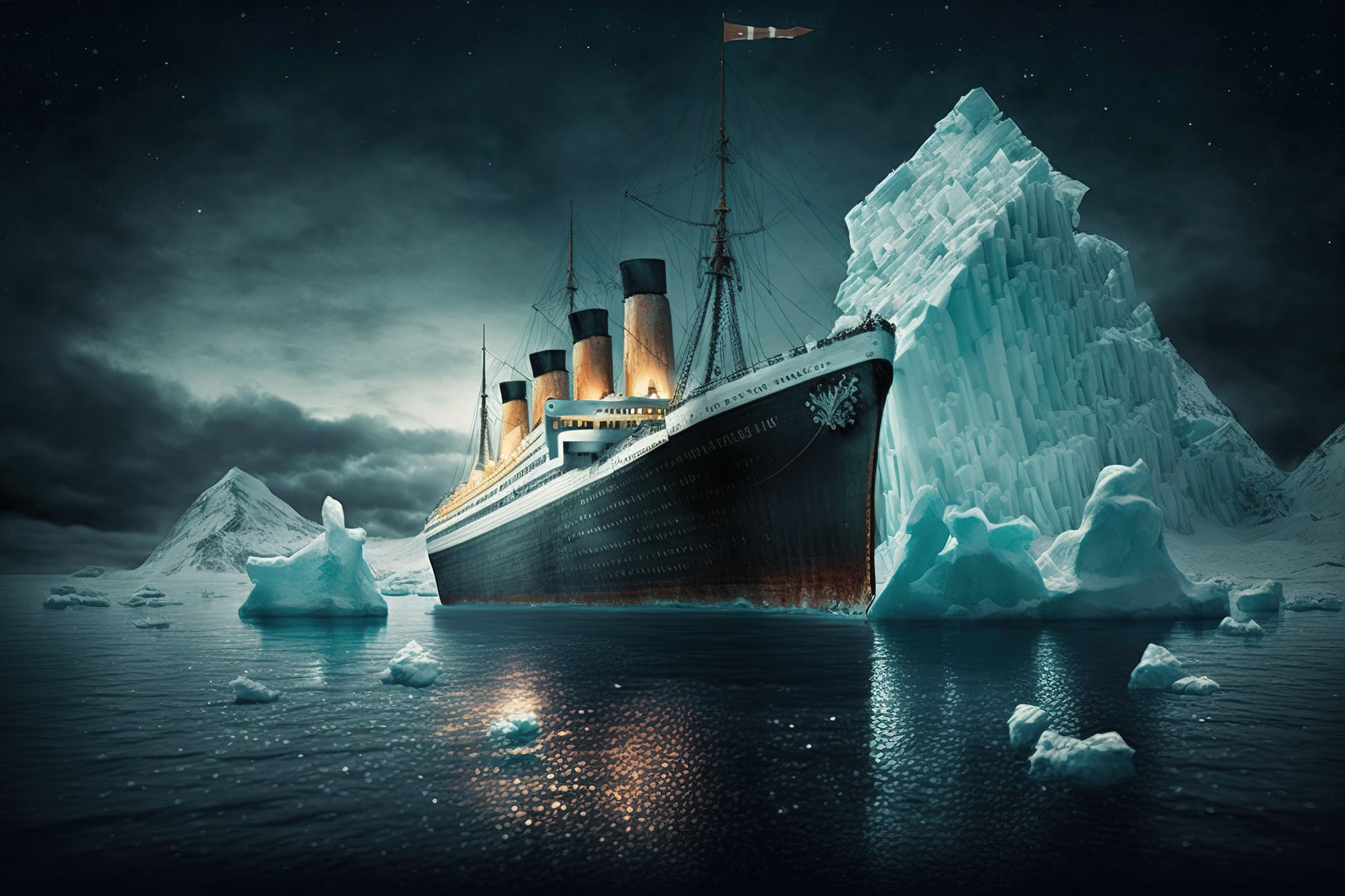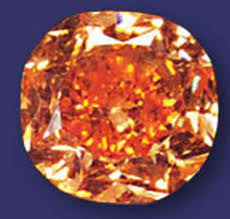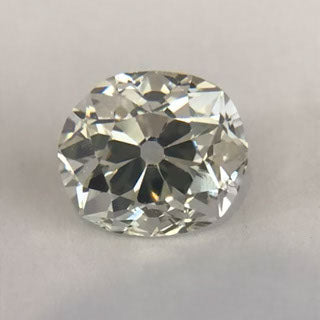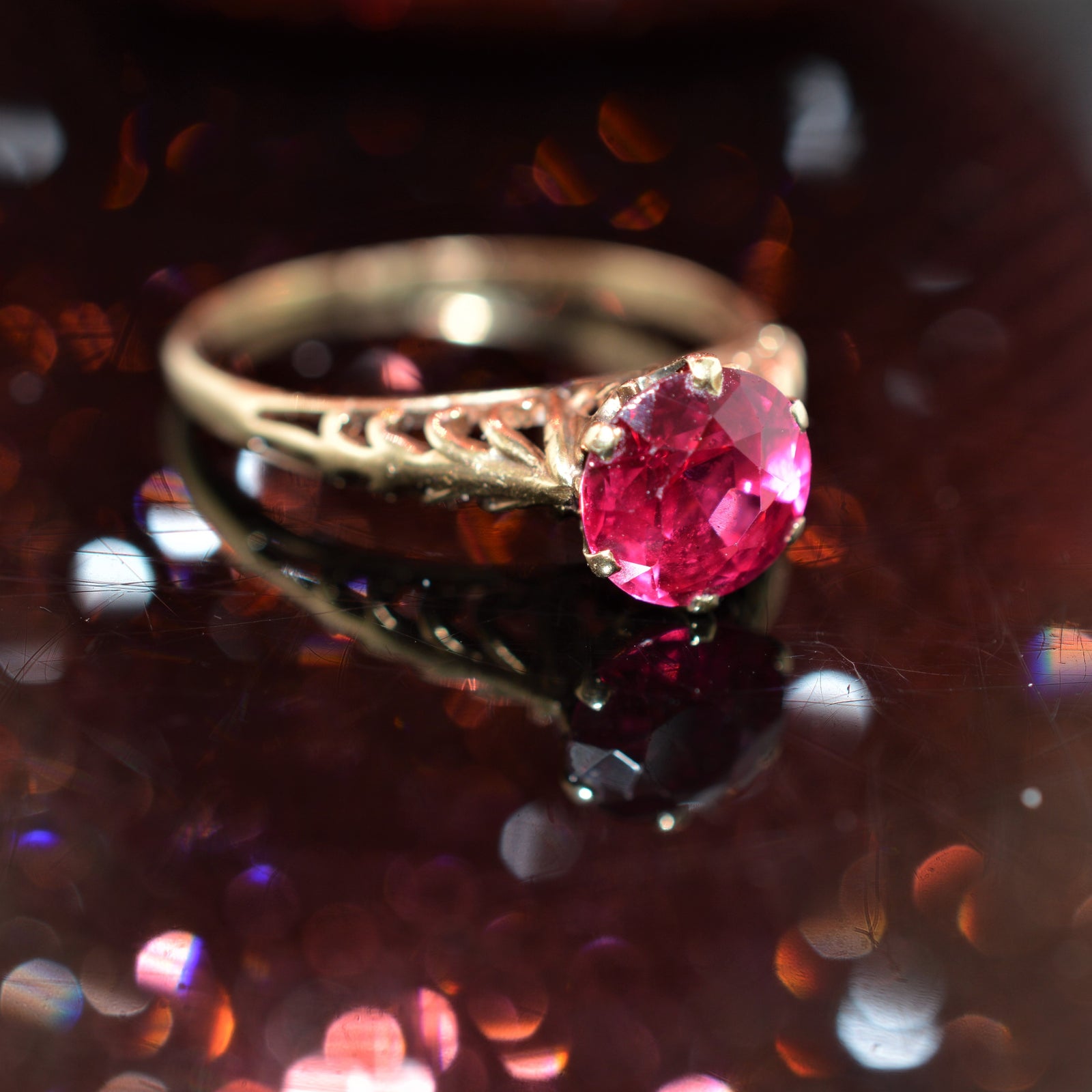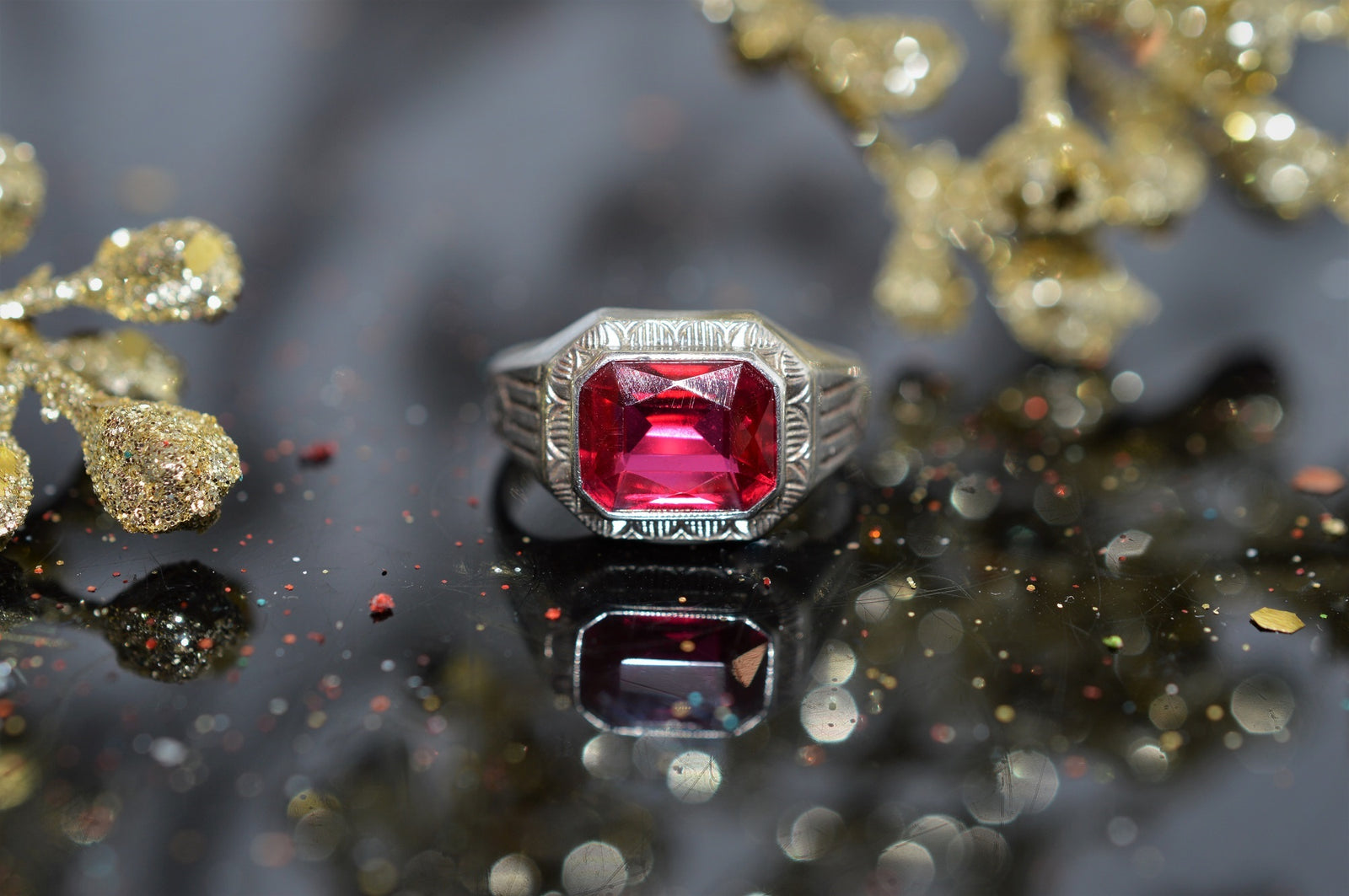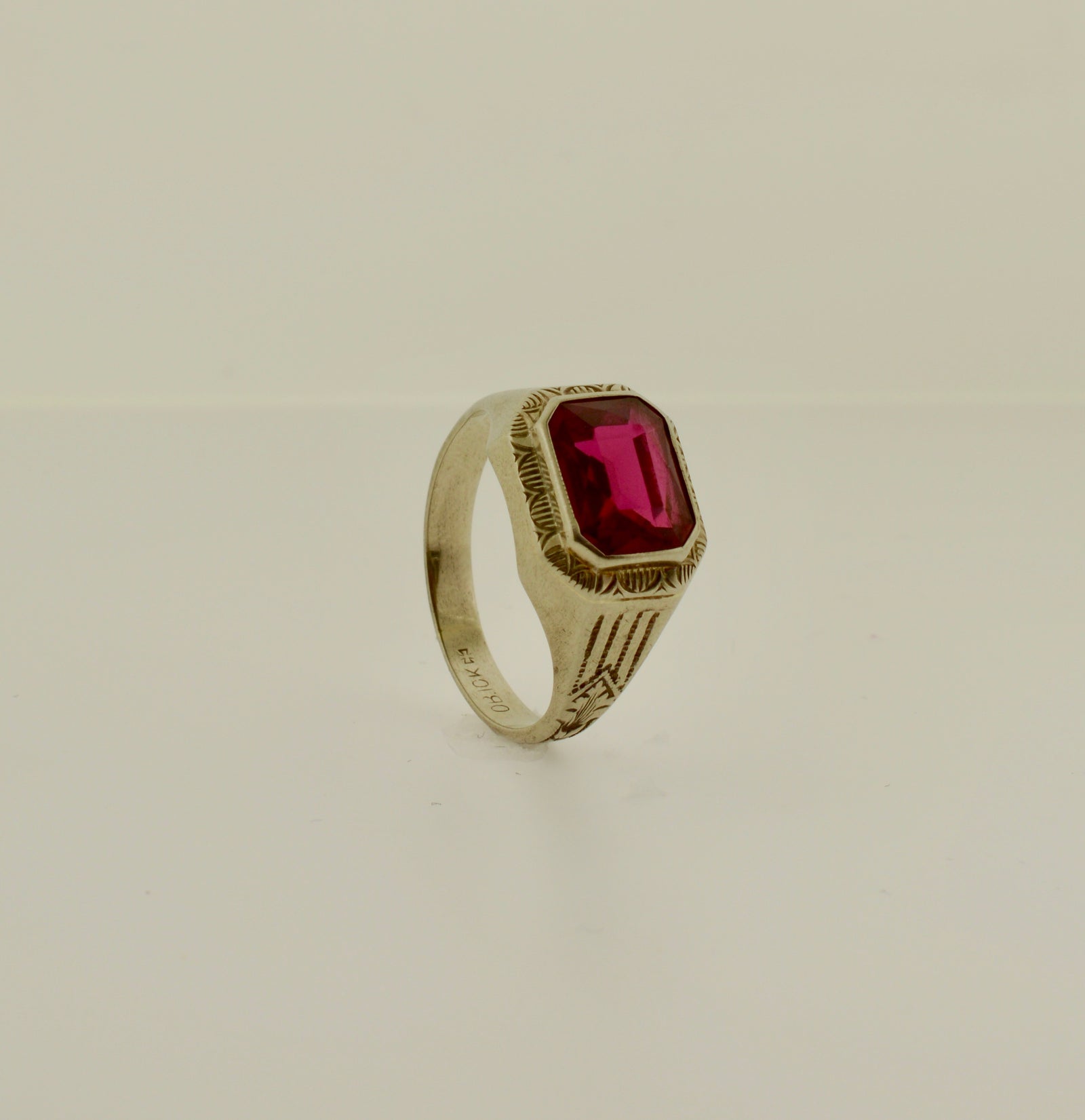You have probably seen James Cameron’s extraordinary motion picture “Titanic” that tells the true story of the most majestic cruise ship ever built on its first and final voyage across the Atlantic. The lead characters are Rose and Jack who are fictional characters set among a backdrop of actual passengers, such as the Unsinkable Molly Brown, John Jacob Astor IV, and Benjamin Guggenheim. One passenger who was not portrayed in the movie was Englehart Cornelius Ostby who is the subject of this essay.

Englehart Cornelius Christensen Ostby was born in Christiania (Oslo) Norway on December 18, 1847. He studies to be a jeweler at the Royal School of Art, spent 6 years in a jewelers apprenticeship, and worked as a successful jeweler in Oslo. In 1866 his parents and one of his brothers emigrated to the United States. When he finished his studies, Englehart followed them in 1869, first traveling to New York and then settling in Providence Rhode Island. In Providence he worked for the jewelry firms of Hunt & Owen and then Arnold & Webster where he spent 9 years as the head of engraving and jewelry design.
In 1879, Englehart C. Ostby and Nathan B. Barton formed a partnership to create the jewelry manufacturer “Ostby & Barton.” With only $3000 of initial capital, the firm would soon become the nation’s largest jewelry manufacturer and the world’s largest producer of gold rings. The firm grew so much and so fast that it relocated several times to larger facilities within Providence.
In 1876, Englehart Ostby married Lizzy Macy Webster. They would go on to have 4 sons and 1 daughter (Helen). Lizzy died in 1899 leaving Englehart to raise their children.
Englehart often traveled to Europe, especially Paris, to view trends in jewelry design and to purchase gemstones for his own creations. On these European trips, Englehart would always take with him a black Doctor’s bag in which he would keep the precious and semi-precious gemstones and other valuables he purchased. Helen would usually accompany her Dad on these buying trips and January 1912 was no exception. On this occasion, Helen and Englehart traveled throughout Europe and Egypt. While in Nice France they heard about a new luxury ship traveling to America called the R.M.S. Titanic. They traveled to Paris where they met Frank and Anna Warren again (they had previously met the Warrens on the Egypt leg of their trip). The Warrens already had their tickets for passage on the R.M.S. Titanic to the United States and convinced their new friends, Englehart and Helen Ostby, to continue their journey together. Accordingly, Englehart Ostby purchased first class tickets on the Titanic for himself and his daughter, Helen, at a cost of 62 British Pounds. The Ostby’s boarded the Titanic at the French port of Cherbourg and occupied 2 cabins; Englehart in cabin B-30 and Helen in cabin B-36.
On the night of the disaster (April 14, 1912) Englehart and Helen sat in the reception room with Mr. and Mrs. Frank Warren listening to the orchestra. Around 10:00pm the Warrens decided to take a stroll on the boat deck but it was too frigid outside, so they returned to their stateroom and went to bed. Englehart and Helen also returned to their cabins to go to sleep. Immediately after the collision with the iceberg at 11:40pm on April 14, 1912, Englehart met his daughter in the corridor that separated their cabins. Together, with the Warrens, they climbed the Grand Staircase and emerged onto the ship’s deck. It was cold outside, so Englehart left his daughter, Helen, and the Warrens next to lifeboat #5 in order to return to their staterooms and retrieve warm clothes. As she was instructed to do, Helen boarded the lifeboat and never saw her Dad again. Englehart’s body was recovered by the cableship MacKay Bennett along with 305 other bodies (more than any other recovery vessel). His body was laid to rest in Providence Rhode Island on May 11, 1912. Helen would be buried near her father in 1978.
After the disaster, the Ostby family sought compensation from the White Star Line (owner of the Titanic) for their loss. Harold Ostby (Englehart’s son) claimed 840,000 N. Kr. (Norwegian Kroner) for loss of life while Helen claimed 5,376 N. Kr. for loss of property and another 33,600 N. Kr. for loss of property and damage.
One might think this is where the story ends, but in 1985 oceanographer Bob Ballard lead an expedition that finally discovered the wreck of the Titanic at the bottom of the North Atlantic ocean at a depth of 13,000 feet below the surface. Since then, there have been numerous expeditions to the wreckage site and even some salvage operations. One such salvage operation occurred in 1987 when a “breathtaking” collection of jewelry was found in a “Doctor’s style valise” recovered from the ocean floor near the stern wreckage of the Titanic. Upon hearing this description, Nancy Clark, the great granddaughter of Englehart C. Ostby wrote a letter to the Titanic Historical Society in which she suggested the “Doctor’s style valise” could be the Doctor’s bag that her great grandfather always took on buying trips to Europe. The Historical Society put her in touch with the salvage company. She provided the salvage company with extensive documentation concerning her great grandfather, his buying trips, and the Doctor’s bag with which he traveled. When asked by the Washington Post if she intended to file a claim of ownership she responded “I don’t want people to think we have a lot of money, because we don’t. I’m just interested in things historical.” This was a relief to many, since it was unclear how ownership would be established. The leader of the salvage operation offered to return items to their rightful heirs. The expedition’s general counsel said that maritime law allows owners of salvaged property to have it returned to them if they pay the prorated costs of the recovery operation. And lastly, there are those who say the White Star Line’s insurance company owns all salvaged property because it paid the loss claims in 1912. However, this legal entanglement was avoided because further inspection of the bag revealed it to contain jewelry (rings, pendant, cufflinks, etc.) not loose gemstones. It also contained well preserved paper money and other items that revealed the bag to be a Purser’s Gladstone bag and not Englehart Ostby’s Doctor’s bag. It seems the items inside were entrusted by individual passengers to the Purser for safe keeping and instead of leaving the bag in the ship’s safe, this Purser took care of the bag himself. Unfortunately, most details about this bag will never be known because all the ships’ Pursers perished in the sinking of the Titanic. But this also means that Ostby’s Doctor’s bag filled with his gemstone purchases still resides somewhere in the wreckage of the R.M.S. Titanic at the bottom of the Atlantic ocean. So stay tuned…
Englehart Ostby was one of 5 jewelers who perished in the sinking of the Titanic. His daughter Helen survived and went home to Providence Rhode Island to run the family business with her brother Harold and Harold’s daughter. Ostby & Barton continued to manufacture quality jewelry well into the 1950’s.
Sometimes referred to as “Titanic Jewels”, Ostby & Barton jewelry is highly sought after by collectors due to its rich history and quality craftsmanship. Howard’s Diamond Center is proud to offer a collection of these historic jewelry pieces in our Antique and Estate Jewelry Department.

















